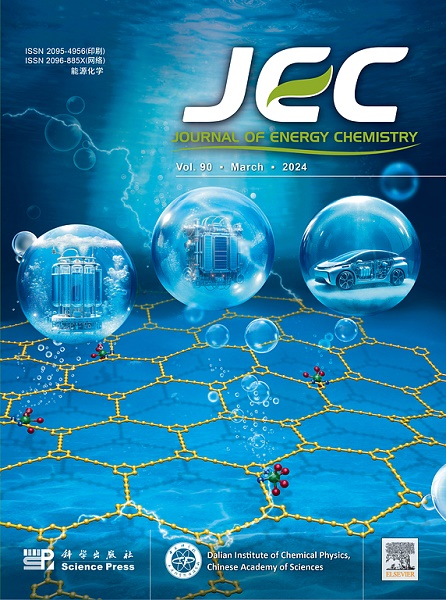Dual-site parallel binding ligands for enhanced perovskite solar cell efficiency
IF 13.1
1区 化学
Q1 Energy
引用次数: 0
Abstract
Perovskite solar cells (PSCs) are promising in the field of photovoltaics but are hindered by surface defects and stability. However, the energetic losses occurring at the interfaces between the perovskite and the charge transport layers often lead to reduced power conversion efficiency (PCE). Surface treatment is an effective strategy but the passivating ligands usually bind with a single active site. The resulted dense packing of resistive passivators perpendicular to the surface is detrimental to charge transport. Here, we present a passivator that can bind to two neighboring lead (Ⅱ) ion (Pb2+) defect sites simultaneously with an aligned parallel mode to the perovskite surface, effectively suppressing the surface trap density and preventing the aggregation. The target device fulfills a PCE of 25.1% and maintains over 85% of the initial efficiency after 800 h of exposure to a relative humidity (RH) of 65% ± 5%.
求助全文
约1分钟内获得全文
求助全文
来源期刊

Journal of Energy Chemistry
CHEMISTRY, APPLIED-CHEMISTRY, PHYSICAL
CiteScore
19.10
自引率
8.40%
发文量
3631
审稿时长
15 days
期刊介绍:
The Journal of Energy Chemistry, the official publication of Science Press and the Dalian Institute of Chemical Physics, Chinese Academy of Sciences, serves as a platform for reporting creative research and innovative applications in energy chemistry. It mainly reports on creative researches and innovative applications of chemical conversions of fossil energy, carbon dioxide, electrochemical energy and hydrogen energy, as well as the conversions of biomass and solar energy related with chemical issues to promote academic exchanges in the field of energy chemistry and to accelerate the exploration, research and development of energy science and technologies.
This journal focuses on original research papers covering various topics within energy chemistry worldwide, including:
Optimized utilization of fossil energy
Hydrogen energy
Conversion and storage of electrochemical energy
Capture, storage, and chemical conversion of carbon dioxide
Materials and nanotechnologies for energy conversion and storage
Chemistry in biomass conversion
Chemistry in the utilization of solar energy
 求助内容:
求助内容: 应助结果提醒方式:
应助结果提醒方式:


